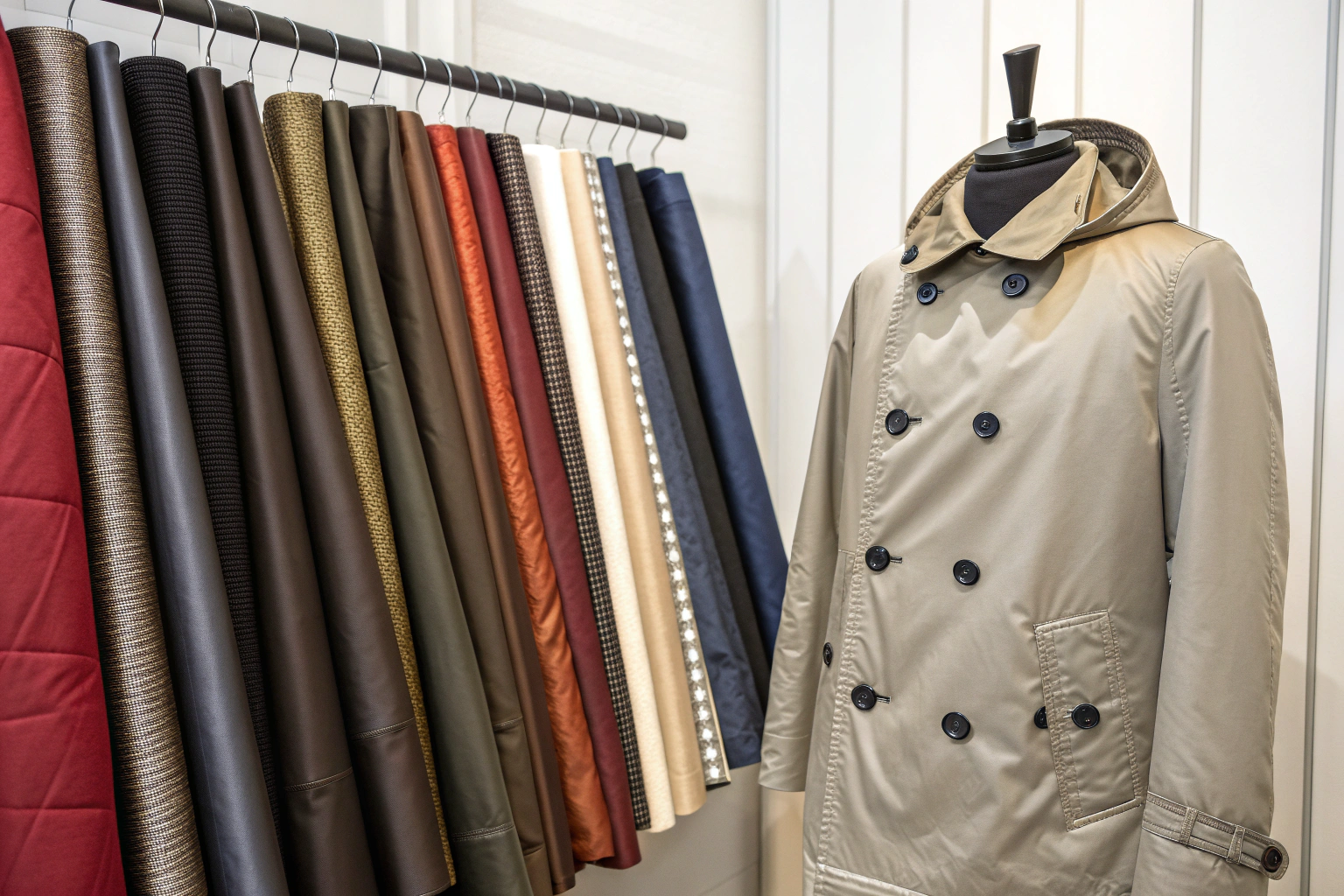Choosing the right lining fabric is a crucial decision that can make or break a jacket or coat. It's the hidden hero, directly impacting comfort, durability, and the overall wearing experience. Many brands focus on the outer shell, but a poor lining choice leads to customer complaints about static, poor breathability, or a short product lifespan. As a fabric expert with over two decades in China's textile hub, Keqiao, I've seen how the right lining elevates a garment from good to great.
The best lining fabrics for jackets and coats balance durability, comfort, and functionality. Key choices include Bemberg Cupro for its luxurious silk-like feel and breathability, Polyester Taffeta for its affordable durability and moisture resistance, and Acetate Satin for a glossy, elegant drape. For specialized outerwear, consider breathable and waterproof membranes or sturdy options like Cotton Sateen. The ideal selection depends on the garment's end-use, desired price point, and specific performance needs like static control or thermal regulation.
Understanding the nuances of lining fabrics is essential for creating successful apparel lines. A well-chosen lining not only enhances comfort but also protects the outer shell and improves the garment's structure. Let's dive into the key factors that will guide you to the perfect lining choice for your next collection.
What are the key properties to consider when choosing a lining fabric?
Before selecting a specific material, it's vital to understand the core functional requirements. The lining is an active component of the garment, not just a simple inner layer. Its performance directly affects how the jacket feels and functions for the end-consumer.
The key properties to consider are slip, durability, breathability, and static control. A lining with good slip allows for easy on-and-off, reducing wear on the outer fabric. Durability is measured in rub tests to ensure the lining can withstand friction from movement. Breathability is critical for comfort, preventing a clammy feel, while static control is a must for wearers in dry climates. Ignoring any of these can lead to garment failure.
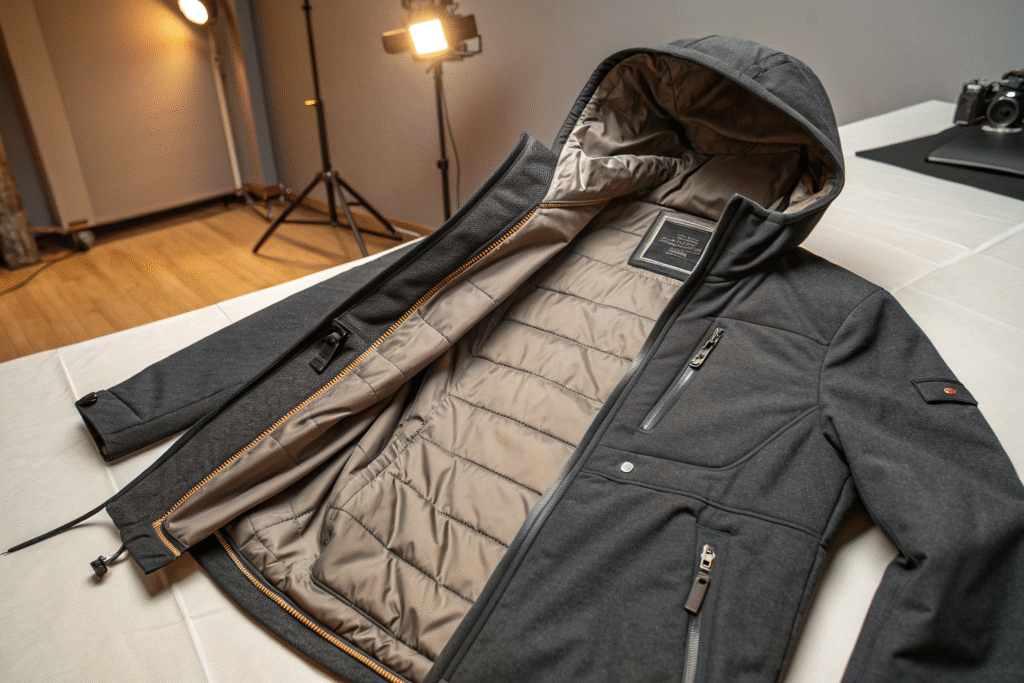
How does slip affect the functionality of a lined garment?
Slip refers to how smoothly the lining fabric moves against the inner clothing, like a sweater or blouse. A lining with excellent slip, such as Bemberg Cupro or certain Acetate weaves, creates a low-friction environment. This makes the jacket easy to put on and take off, and it allows for comfortable, unrestricted movement. Poor slip can cause the jacket to bunch up or feel restrictive. In our testing for brands like ZARA, we prioritize linings that achieve a high rating on standardized slip tests to ensure day-long comfort.
Why is breathability a non-negotiable feature for coat linings?
Breathability determines how well moisture vapor (like sweat) can escape from inside the garment. A non-breathable lining, such as a cheap, densely woven polyester, will trap humidity, leaving the wearer feeling cold and damp. This is not only uncomfortable but can also lead to the growth of odor-causing bacteria. For performance outerwear, linings integrated with waterproof breathable membranes are essential. For fashion coats, natural or semi-synthetic fibers like Cupro or Viscose blends offer superior moisture management compared to standard polyester, significantly enhancing comfort.
Which natural and semi-synthetic lining fabrics offer the best comfort?
For brands targeting a premium market, the comfort and feel of a lining are paramount. Natural and semi-synthetic fibers excel in providing a luxurious, skin-friendly experience that synthetic alternatives often cannot match.
Bemberg Cupro and Acetate are the top choices for premium comfort, offering a silky, breathable, and anti-static feel. These fibers are derived from natural cellulose (often from cotton linter or wood pulp) and are prized for their ability to mimic the best qualities of silk without the high cost and delicate nature. They are biodegradable to a large extent, aligning with growing demand for sustainable materials.
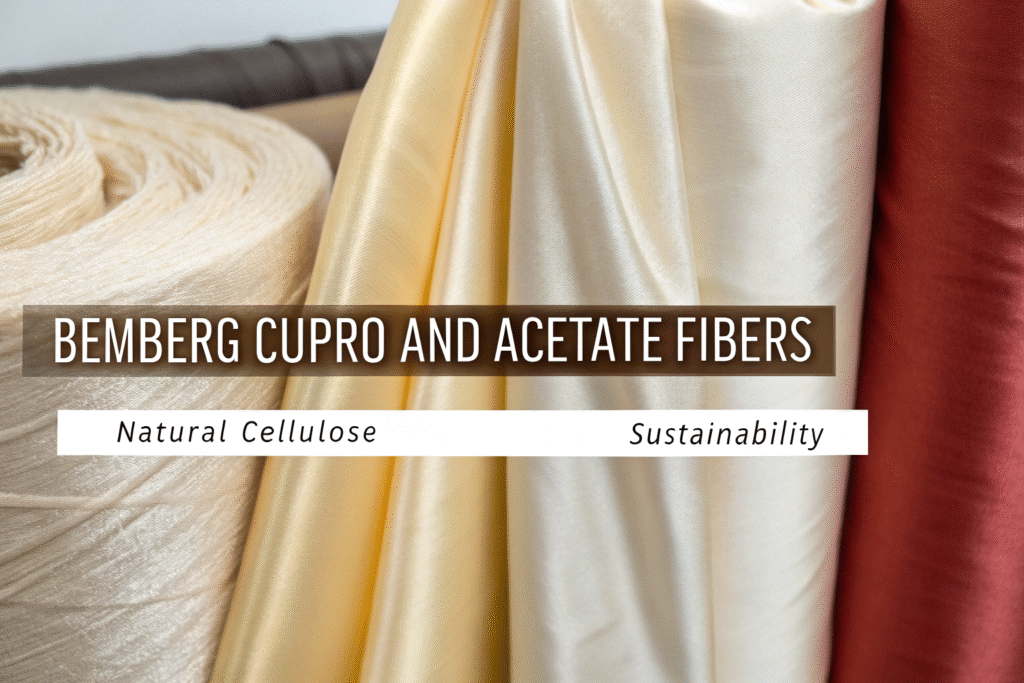
What makes Bemberg Cupro a superior choice for high-end jackets?
Bemberg Cupro is a regenerated cellulose fiber known for its exceptional smoothness and high moisture absorption. It feels cool and silky against the skin, making it ideal for coats worn over formalwear or delicate knits. Its structure is micro-porous, which allows it to breathe very effectively, regulating body temperature. Furthermore, Bemberg is inherently anti-static, a critical advantage over many synthetic linings. Our clients who supply luxury brands consistently choose Bemberg for its unparalleled combination of comfort and performance. It's a key part of our eco-fabric portfolio, meeting stringent EU certifications.
How does Acetate provide an affordable luxury alternative?
Acetate is another cellulosic fiber that delivers a beautiful, lustrous drape at a more accessible price point than Cupro or silk. It is often woven into a satin weave to enhance its glossy appearance, which adds a touch of elegance to the interior of a coat. While not as durable or absorbent as Cupro, Acetate remains a popular choice for mid-tier fashion jackets where a luxurious aesthetic is important. We stock over 50 variations of Acetate satin, allowing for extensive customization in color and weight to match specific design needs.
| Fabric | Key Advantage | Ideal For | Consideration |
|---|---|---|---|
| Bemberg Cupro | Superior breathability & anti-static | High-end coats, blazers, luxury wear | Higher cost than synthetics |
| Acetate Satin | Luxurious glossy drape | Fashion coats, jackets where aesthetic is key | Less durable, prone to pilling |
| Viscose Blends | Good moisture-wicking, soft handfeel | Mid-weight jackets, value-conscious lines | Can wrinkle more easily |
What are the most durable and functional synthetic lining options?
When budget, durability, and specific technical performances are the primary drivers, synthetic linings are the workhorses of the industry. They offer consistent quality and can be engineered to meet precise functional demands.
Polyester-based linings, including Taffeta and Mesh, are the most durable and cost-effective options for mass-market and performance wear. Polyester is strong, resistant to wrinkles and shrinkage, and dries quickly. It can be finished with various coatings to enhance its functionality, such as water resistance or flame retardancy. For athleisure and outdoor lines, these synthetics are often the default choice.
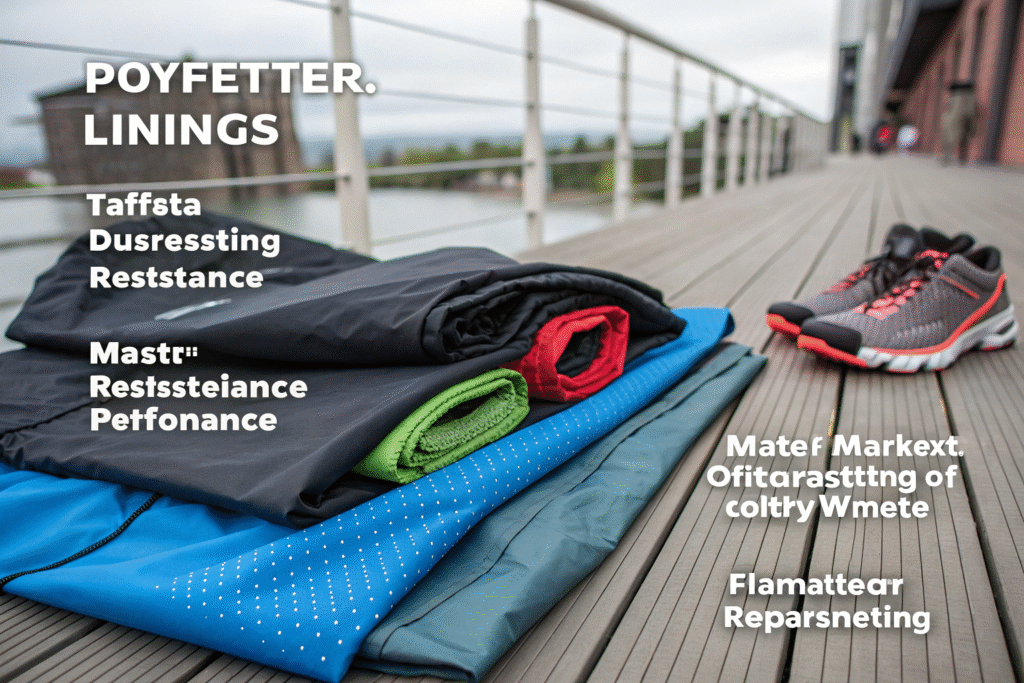
Why is Polyester Taffeta the go-to for everyday jackets?
Polyester Taffeta is a plain weave fabric known for its crisp handfeel, lightweight, and excellent strength-to-weight ratio. It provides a reliable barrier between the outer shell and the wearer's clothing, protecting both. Its tight weave offers inherent wind resistance and can be treated with a water-repellent (DWR) finish for added weather protection. Because of its low cost and consistent quality, it's the most widely used lining for everything from fast-fashion puffer jackets to school uniforms. Our CNAS-certified lab rigorously tests the colorfastness and shrinkage of our polyester linings to ensure they meet international standards like SGS/ITS.
When should you consider specialized functional linings?
For technical outerwear, the lining must do more than just cover the seams. This is where functional linings come into play. Waterproof and breathable membranes like those used in Gore-Tex equivalents are laminated to the outer shell or offered as a separate lining layer. These are essential for true waterproof jackets. Similarly, mesh linings are used in sportswear to create an air gap, enhancing breathability and moisture wicking. For safety wear, flame-retardant (FR) linings made from treated polyester or inherent FR fibers like Aramid are non-negotiable. Our R&D team develops new functional textiles annually, including self-cleaning coatings, to meet evolving market needs.
How do you match the right lining to different types of outerwear?
The final and most practical step is aligning the lining's characteristics with the specific demands of the jacket or coat style. A misstep here can undermine the entire design.
The golden rule is to match the lining's weight, functionality, and cost to the outerwear's purpose. A heavy winter parka needs a different lining than a lightweight spring trench coat. Understanding this correlation is key to making an informed decision that satisfies both the designer's vision and the consumer's practical needs.
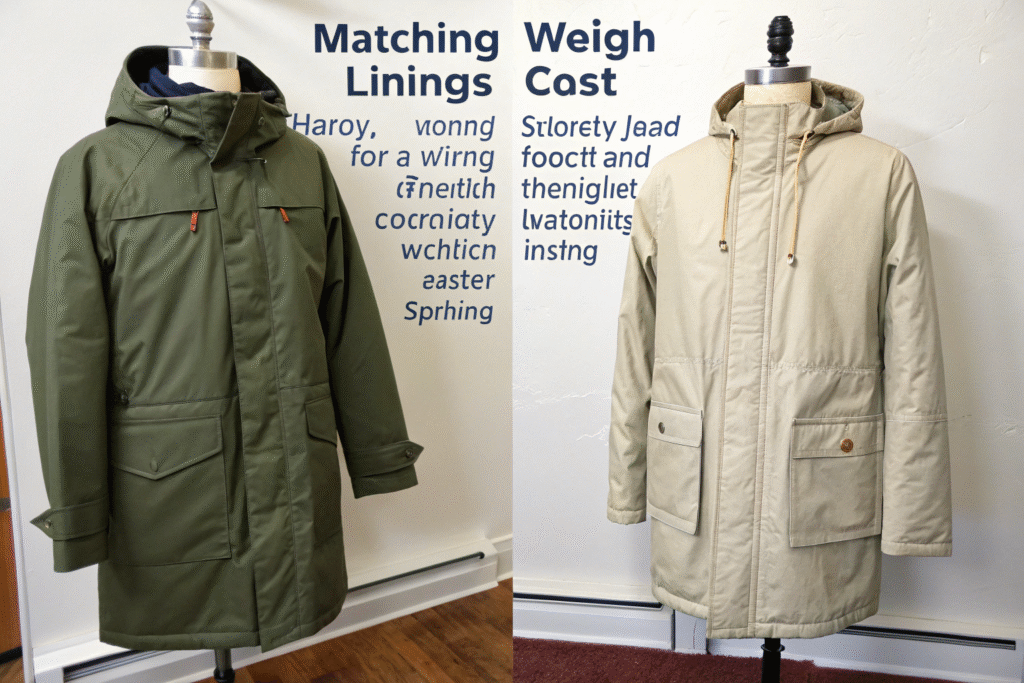
What is the ideal lining for a heavyweight winter coat?
For insulated winter coats and parkas, the lining must be robust enough to handle the bulk of the insulation and resist abrasion from heavy sweaters. A durable Polyester Taffeta or a Nylon lining is often the best choice. Its smooth surface also helps the heavy garment slide on easily. Some designers opt for a soft brushed polyester or cotton flannel lining for added warmth and a cozy feel against the skin, but these can have more friction. Our advice is to prioritize durability and slip for the main body lining and use softer fabrics only in specific areas like the collar.
Which lining works best for lightweight and formal jackets?
For lightweight jackets like windbreakers, trench coats, and formal blazers, the lining should not add unnecessary bulk. Bemberg Cupro is the premium choice for blazers and trench coats due to its breathability and luxurious drape. For fashion-oriented windbreakers or anoraks, a lightweight Polyester China Silk or Acetate lining provides sufficient functionality without compromising the garment's intended silhouette. In our one-stop customization service, we help clients from yarn sourcing to lab dips, ensuring the lining color and weight perfectly complement the outer shell for a cohesive, high-quality finish.
Conclusion
Selecting the perfect lining fabric is a strategic decision that profoundly impacts the quality, comfort, and market success of your jackets and coats. From the luxurious breathability of Bemberg Cupro for high-end fashion to the rugged durability of Polyester Taffeta for outdoor gear, the right choice reinforces the garment's purpose and enhances the wearer's experience. It's not just an interior detail; it's a critical component of your product's value proposition.
By carefully considering factors like slip, breathability, and specific end-use, you can make an informed choice that elevates your designs. Remember, a superior lining is a hallmark of a well-made garment, distinguishing your brand in a competitive marketplace. If you are looking to develop your next line of jackets or coats with expert fabric sourcing and seamless production, we are here to partner with you. For a direct conversation about your specific needs, please contact our Business Director, Elaine, at elaine@fumaoclothing.com. Let's create something exceptional together.

